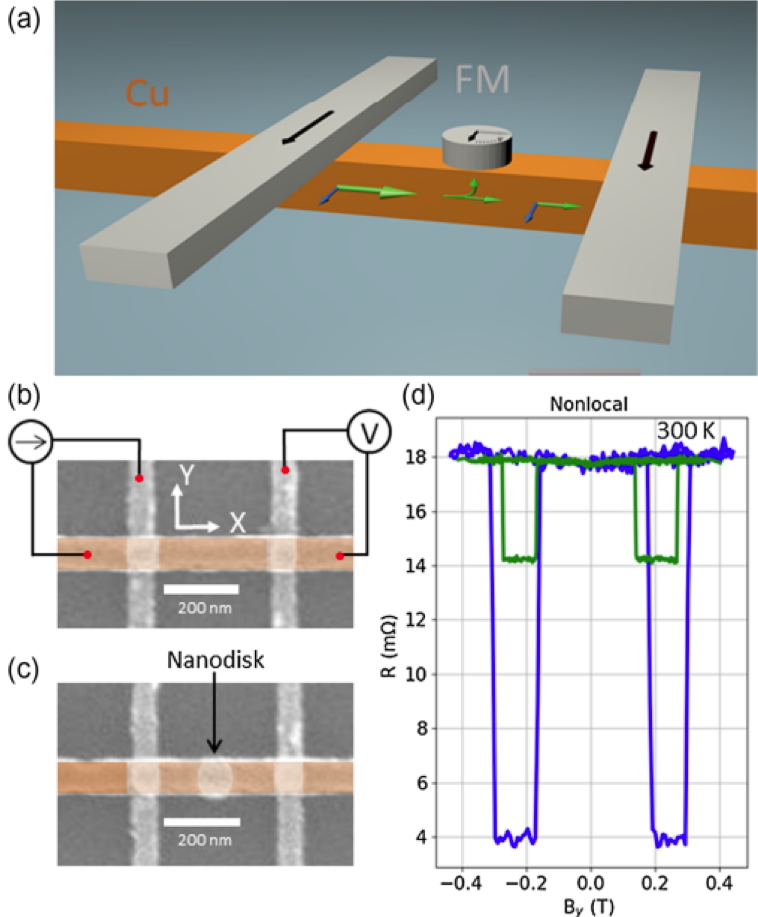Devices based on the use of electron spin are gaining importance in microelectronics. Indeed, this spin is complementary and distinct from the charge and can therefore be used as an information carrier. In a ferromagnetic material, characterized by a fixed magnetization, the electrons carrying the current have their spin aligned with it. What happens when electrons with a spin not aligned with the magnetization are introduced into this material? This is the question that researchers at IRIG have asked themselves.
In a ferromagnetic material characterized locally by a magnetization directed in a certain direction in space, the electrons carrying the current have their spin oriented in the same or opposite direction to the magnetization, those of the same direction being the majority. At equilibrium, the ratio between the two spin groups is fixed. But this equilibrium can be broken to create an imbalance in this spin population. With the help of special structures, it is for example possible to introduce electrons of spin opposite to the magnetization of the material. The minority spins are then in excess. It is also possible to rotate the spin of the electrons perpendicular to the magnetization of the material, without changing it. There will then necessarily be a return to equilibrium, and the spins in the perpendicular direction or in excess will be absorbed.
The question asked was the following: are these two types of imbalance identical in terms of their return to equilibrium? In other words, does the direction of the magnetization play a role in the absorption of the electron spin?
Measuring this effect is easier to imagine than to do. Physicists have many techniques to measure this return to equilibrium, but they are difficult to implement at the local scale. Often, parasitic effects complicate the interpretation.
Based on their expertise in electron beam lithography and their knowledge of ferromagnetic materials, we created [Spintec collaboration] a measuring device to evaluate this absorption (
Figure). We were then able to show that the absorption was stronger when the spin of the "non-equilibrium" electrons is perpendicular to the magnetization of the material. This observation allowed to access fundamental parameters of the spin transport, experimentally not well known.

(a) Scheme of the device. The small disk above the orange wire is used to absorb the spins generated by the grey transverse wires representing ferromagnetic materials.
(b) Photographs of the device with and without absorbing nanodisk.
(c) Signal measured with (green) and without (blue) nanodisk.